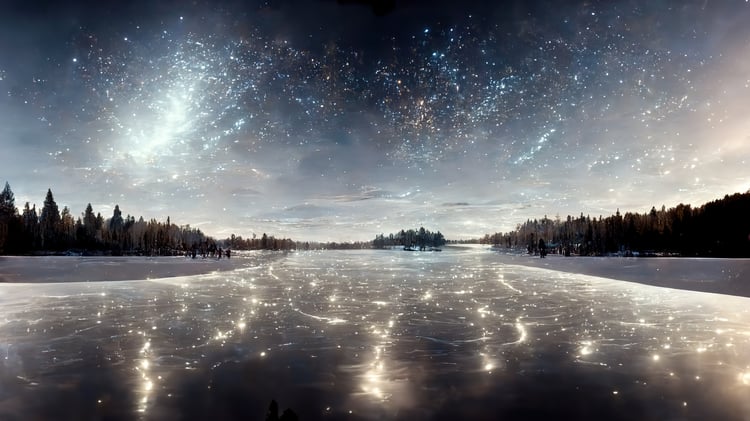Sunlight continues to dwindle each day as we approach the shortest and darkest day of the year, the winter solstice. Although ski resorts open and snow starts to blanket the ground around October or November in the Colorado mountains, the astronomical start date of winter occurs on the winter solstice, happening this year on December 21st.
The astronomical phenomenon of the winter solstice has to do with the tilt of the earth’s axis and its position to the sun’s path. During the winter solstice, the sun is at its most southern point while the earth’s axis is tilted furthest from the sun. Similarly, the summer solstice, which occurs in June, brings the most daylight of any day of the year, as the earth’s axis is tilted closest to the sun with the sun at its most northern part of its path. When the winter solstice is happening in the northern hemisphere, the summer solstice is happening in the southern hemisphere.
There are many different cultural perspectives and traditions surrounding the winter solstice, and many holidays that are celebrated around this time have evolved from early solstice rituals.
Many of these traditions center around the anticipation of the light that is to come, a reminder that no matter how dark times get, the light will always return. Some perspectives see the winter solstice as a time for divine birth, alluding that light emerges out of the darkness, and many traditions light candles or make fires to emulate this. Sharing food in community is also common across cultures during this day.
A general interpretation of the winter solstice is that it’s a time to connect with the rhythms of nature, which we are all a part of. Connecting with the natural world is a practice that can bring us more in tune with our own cycles to understand ourselves more clearly and bring us a sense of groundedness, connection, and peace. Below are some nature-based activities that you can do on your own or with loved ones to honor and connect with nature this winter solstice.

Cold winter solstice landscape with snow.
Go on a Mindfulness Night Walk
Connect with your senses by going for a walk during the evening (or by joining our backcountry hiking guide for a full moon snowshoe). This could be at dusk to witness the sun as it sets, or this could be in the dark of the night. Take time to be present with your surroundings. Look at the stars, the snow, and anything else that sparks your curiosity. Notice what you smell. Listen to the sounds around you, including the sounds of your own footsteps. Notice what your body is feeling, and connect with your breath. You may find you discover something special that can’t be found during the day.
Create Compostable Garlands
Use compostable string, like twine, to create natural garlands for a festive decoration. Citrus slices or peels can be dried out to make fun shapes; pine cones can be collected; and juniper cones, rose hips, or dried flowers can be added. See what you find in nature and add your own flare!
Make Natural Bird Feeders
This is a sweet craft for kids (or even adults). Spend time collecting pine cones outside. Make them into natural bird feeders by covering them with peanut or sunflower butter. Roll the sticky cone through bird seed, and it’s ready to place in a tree outside. You can add a compostable thread like twine if you’d like to hang it.
Gather Around a Fire
Make a fire in your backyard or in an area that fires are permitted. Fireside activities can be as simple as enjoying the fire’s warmth, sipping a warm beverage, or chatting with loved ones to add some light to the darkness. For a more intentional activity, write down what you no longer feel is serving you on a piece of paper; after reflecting about why you’re ready to let these things go, release them into the fire. If you don’t have a fire, you can still do this and instead recycle the paper when you’re done with it.
Embrace the Darkness
Honor your circadian rhythm by welcoming the absence of light. Instead of using artificial lights in your home for the night, light candles, and let your eyes adjust to the darkness. This could be a time for reflection and setting intentions, taking a relaxing bath, connecting with your body through stretching or yoga, or avoiding screens for the evening. Fun activities to do with kids could include making blanket forts to cozy up in, creating stories or songs together, or playing a game like flashlight hide and seek.
Explore what feels most authentic to you and your loved ones as it relates to honoring or celebrating the winter solstice. There may be practices tied to you and your family's culture or religion that you’re interested in learning more about, or you may be ready to start new traditions based on your own personal values. Because the solstices impact the natural rhythms in every part of the world, there are innumerable ways to find connection during these cyclical times of darkness and light.
Riley Gaines is the Community Science and Hiking Coordinator at Walking Mountain. He enjoys watching birds but needs to practice his identification skills.







